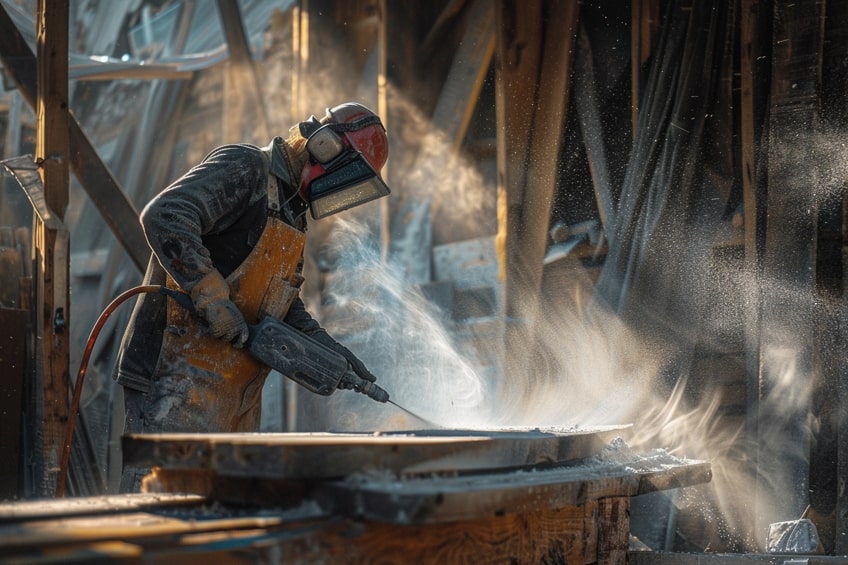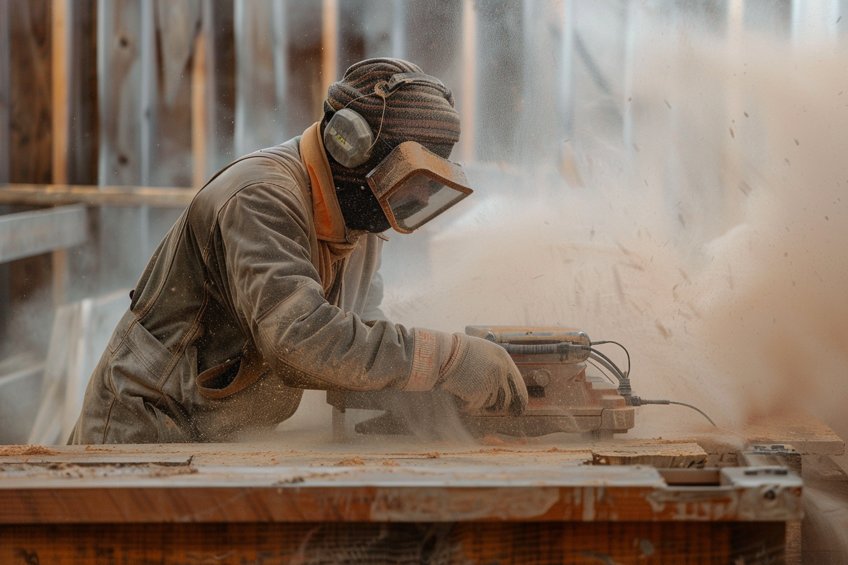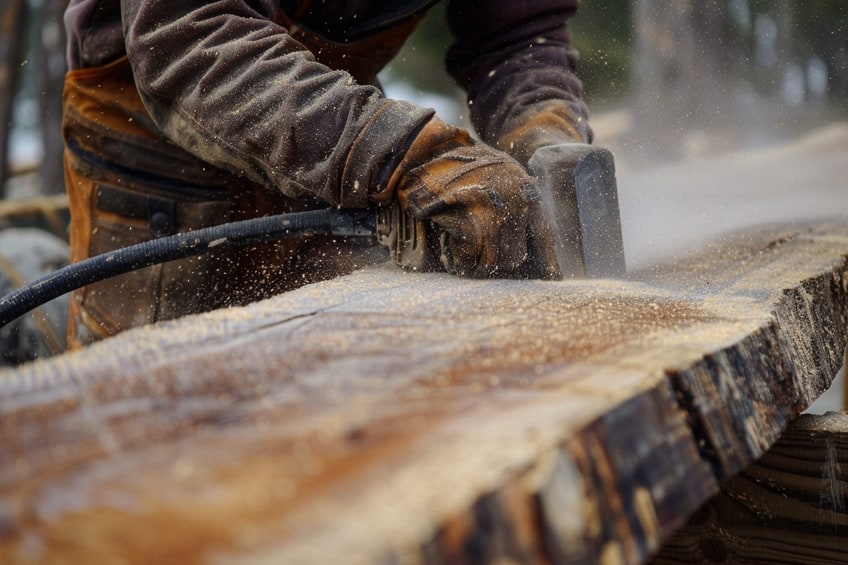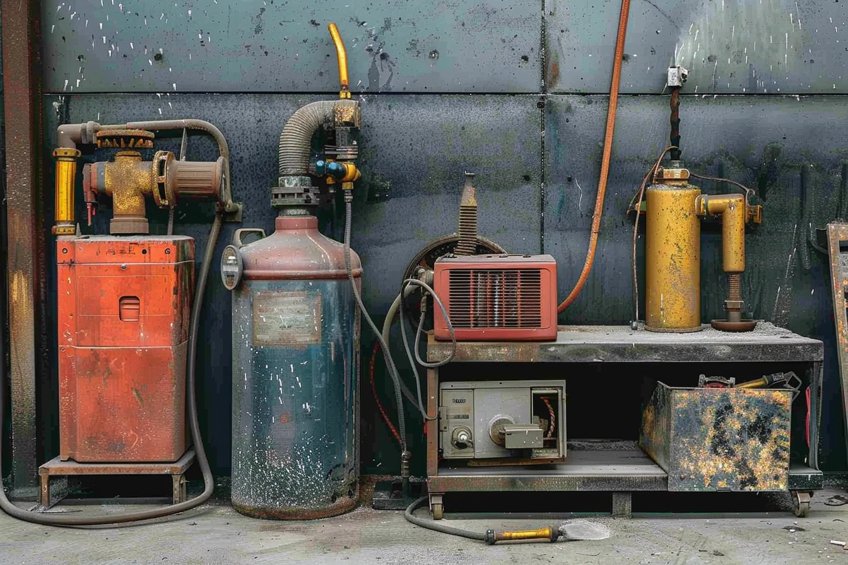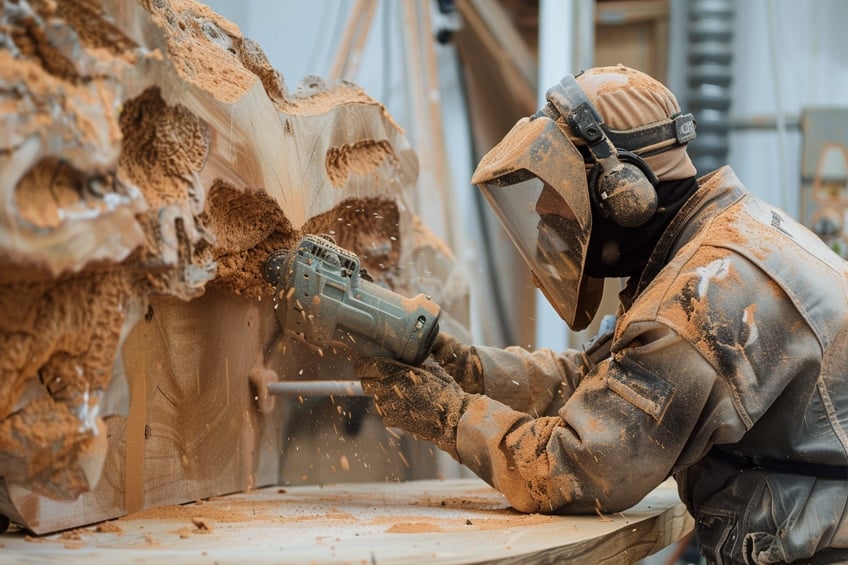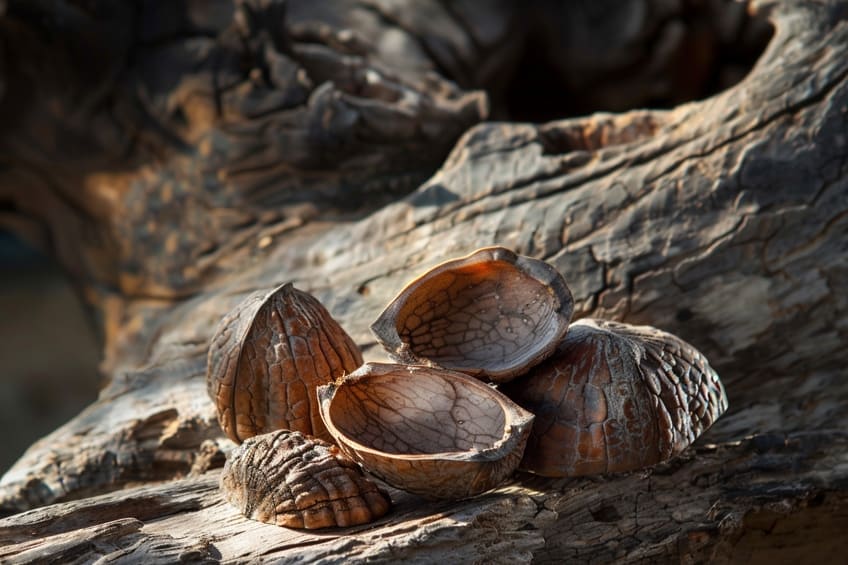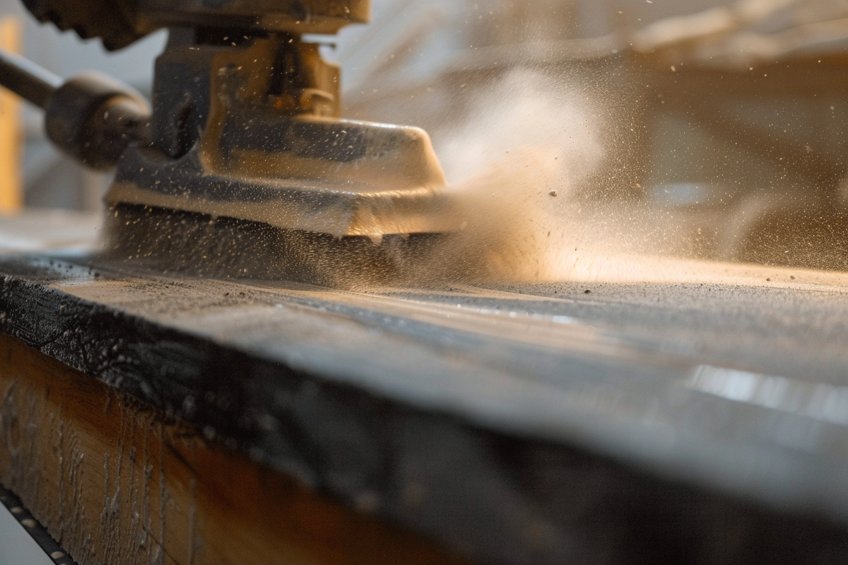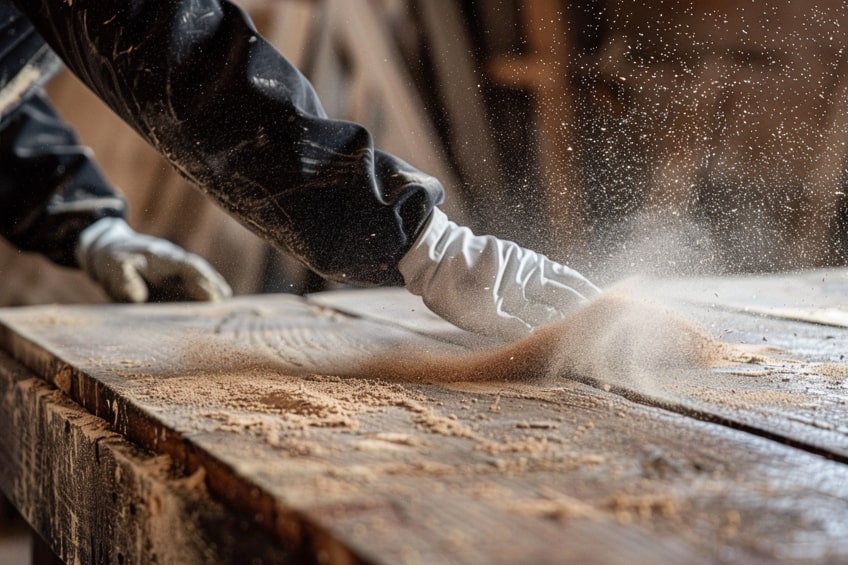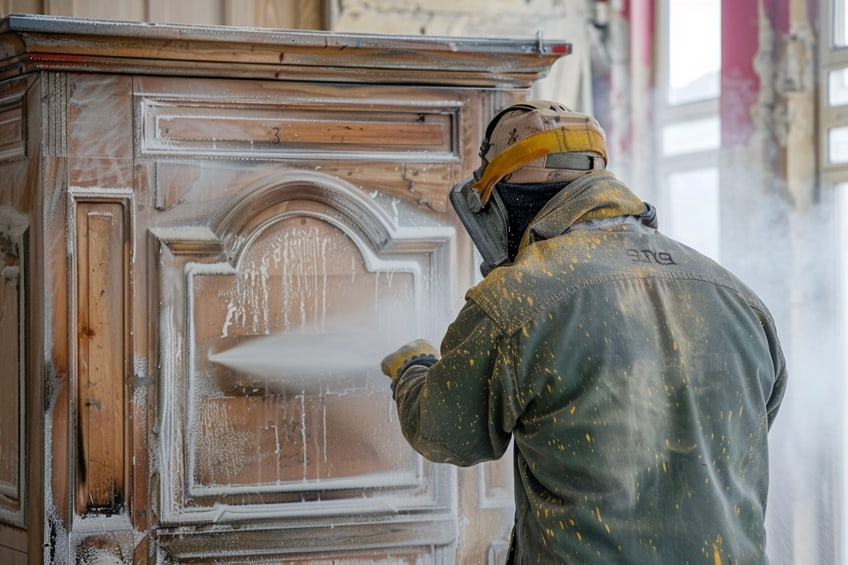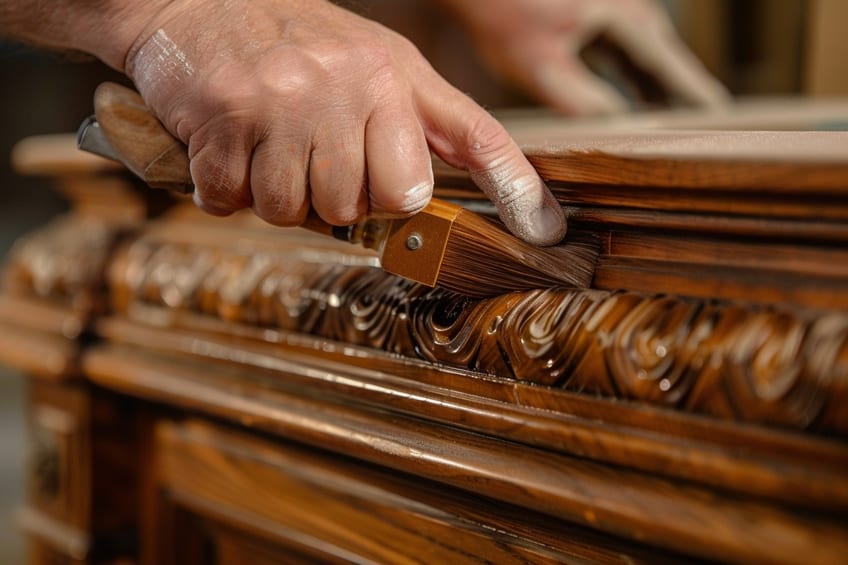Can You Sandblast Wood? – Timber Transformations
This post may contain affiliate links. We may earn a small commission from purchases made through them, at no additional cost to you. You help to support resin-expert.com
Welcome to the world of DIY adventures, where sandblasting meets woodworking in a whirlwind of creativity and craftsmanship! Have you ever wondered if you can sandblast wood to achieve that perfect finish? Join us on a journey of discovery as we delve into the art of sandblasting and its magical transformation on wooden surfaces. Whether you’re a seasoned DIY enthusiast or just dipping your toes into the world of home projects, get ready to unleash your inner artist and explore the wonders of sandblasting wood like never before!
Table of Contents
Key Takeaways
- Sandblasting wood is possible, but it requires proper techniques and sandblasting medium to avoid damaging the wood.
- The process of sandblasting wood is different from sandblasting metal or other surfaces, and caution should be applied.
- Sandblasting wood can be an efficient and clean method of restoring the natural beauty of wood surfaces.
Understanding Sandblasting and Its Application on Wood
Sandblasting is a popular method of surface preparation used to clean and restore various surfaces, including wood. But can you sandblast wood? The answer is yes, you can. However, it’s important to understand the process and take necessary precautions to avoid damaging the wood. Sandblasting wood involves using abrasive materials to remove layers of paint, varnish, or other coatings from the surface of the wood. This process can expose the natural wood grain and restore its beauty.
However, wood is not a forgiving canvas, and caution should be applied when sandblasting. Wood varies widely in hardness and density, so it’s important to use the correct techniques and sandblasting medium to avoid damaging the wood. When sandblasting wood, it’s important to keep in mind that the process is different from sandblasting metal or other surfaces. Wood is a delicate material, and the sandblasting process can easily damage it. Therefore, it’s crucial to follow the right procedures to ensure that the wood is not damaged during the sandblasting process.
What Is Sandblasting?
Sandblasting is a powerful process that involves the use of abrasive materials to remove layers of paint, varnish, or other coatings from wood surfaces. It exposes the natural wood grain and restores its beauty. Sandblasting is a common technique used by woodworkers who seek to restore furniture, clean the wood, remove paint and finish, and make wooden signboards. The process of sandblasting involves the use of a sandblaster, which is a tool that uses compressed air to shoot abrasive materials at high speed to the wood surface. The abrasive materials used in sandblasting can be anything from sand, glass beads, walnut shells, or even baking soda.
The choice of abrasive material depends on the type of wood surface and the intended result.
Benefits of Sandblasting Wood
Sandblasting wood has several benefits. First, it is an efficient way of cleaning wood surfaces. It removes dirt, grime, and other contaminants that have accumulated on the surface over time. Second, sandblasting is an effective way of removing old paint and finish from wood surfaces. It exposes the natural wood grain, making it easier to apply a new coat of paint or finish. Third, sandblasting wood is an excellent way of restoring old furniture and other wooden objects. It removes scratches, dents, and other imperfections, making the wood surface look new again.
Choosing the Right Sandblasting Equipment
Choosing the right sandblasting equipment is essential to achieve the desired result. The equipment needed for sandblasting wood includes a sandblaster, compressor, nozzle, blasting gun, and sandblasting cabinet. The sandblaster is the tool that shoots the abrasive material at high speed to the wood surface. The compressor provides the air pressure needed to operate the sandblaster. The nozzle and blasting gun control the flow of abrasive material and the direction of the blast.
The sandblasting cabinet is used to contain the blasting process, preventing the abrasive material from scattering.
When choosing sandblasting equipment, it is essential to consider the type of wood surface and the intended result. For example, softer woods require a less abrasive material, while harder woods require a more abrasive material. The size of the sandblaster and compressor should also be considered, depending on the size of the wood surface to be sandblasted.
In conclusion, sandblasting is a powerful process that can transform wood surfaces from dull and worn to smooth and new-looking. It is an efficient way of cleaning wood surfaces, removing old paint and finish, and restoring old furniture and other wooden objects. Choosing the right sandblasting equipment is essential to achieve the desired result.
Preparing for a Sandblasting Project
Sandblasting can be a great way to restore wood projects and give them a new look. However, it is important to take certain precautions and prepare the work area properly before starting the project. This section will cover the necessary steps to prepare for a sandblasting project.
Safety Precautions and Protective Equipment
Safety should always be a top priority when sandblasting. It is important to wear appropriate protective equipment, such as goggles, gloves, and a respirator. These items will protect the eyes, hands, and lungs from the abrasive materials used in the sandblasting process.
In addition to protective equipment, it is important to ensure that the work area is well-ventilated. This will help to prevent the buildup of dust and fumes, which can be harmful to breathe in. It is also a good idea to wear clothing that covers the skin, as the abrasive materials can cause skin irritation.
Setting Up the Work Area
Before starting a sandblasting project, it is important to set up the work area properly. This will help to prevent damage to surrounding surfaces and ensure that the project is completed safely and efficiently. One important step is to lay down a tarp or other protective covering on the ground. This will catch any debris or abrasive materials that fall during the sandblasting process, making cleanup easier.
It is also a good idea to cover any nearby surfaces that could be damaged by the abrasive materials.
Selecting the Appropriate Abrasive Material
There are several types of abrasive materials that can be used for sandblasting wood. Some common options include walnut shells, silicon carbide, aluminum oxide, glass, and baking soda. The choice of abrasive material will depend on the type of wood being sandblasted and the desired outcome. For example, walnut shells are a good choice for softer woods, as they are less likely to cause damage.
Silicon carbide and aluminum oxide are better suited for harder woods, as they are more abrasive. Glass and baking soda can be used for more delicate projects, as they are less likely to cause damage to the wood surface. By taking these steps to prepare for a sandblasting project, it is possible to complete the project safely and efficiently.
With the right protective equipment and abrasive materials, it is possible to restore wood projects and give them a new lease on life.
The Sandblasting Process for Wood
Sandblasting is a powerful technique that can transform old and worn-out wooden surfaces into beautiful and new-looking ones. However, before starting the sandblasting process, it is important to understand the correct techniques and precautions to avoid damaging the wood.
Step-by-Step Sandblasting Procedure
The first step in sandblasting wood is to prepare the surface. This includes removing any loose paint, dirt, or debris. Next, the wood surface should be sanded with fine-grit sandpaper to remove any remaining finish or stain.
Once the surface is prepared, the wood can be sandblasted. The sandblasting process involves using high-pressure air to blast abrasive material onto the wood surface. The abrasive material can be anything from sand to walnut shells, depending on the desired finish.
Adjusting Pressure and Blasting Technique
Adjusting the pressure and blasting technique is crucial to achieve the desired effect. The pressure should be adjusted based on the type of wood and the desired finish. For example, softer woods require lower pressure to avoid damaging the wood grain, while harder woods can withstand higher pressure. The blasting technique should also be adjusted based on the type of wood. For example, the blasting angle should be adjusted to avoid blasting against the wood grain, which can cause damage.
Additionally, the distance between the nozzle and the wood surface should be adjusted to avoid damaging the wood.
Post-Sandblasting Cleanup and Finishing
After sandblasting, the wood surface should be cleaned of any remaining debris. This can be done using a tack cloth or compressed air. Once the surface is clean, any imperfections or holes can be filled with wood filler. Finally, the wood can be finished with varnish, stain, or oil, depending on the desired look. The finish should be applied evenly and allowed to dry completely before use.
Sandblasting can be a great way to restore and transform wooden surfaces. However, it is important to follow the correct techniques and precautions to avoid damaging the wood. By adjusting the pressure and blasting technique, cleaning the surface, and applying the appropriate finish, the wood can be restored to its former glory.
Common Considerations and Tips for Sandblasting Wood
When sandblasting wood, several key considerations and tips can ensure a successful and satisfying outcome. Firstly, always start with the right equipment, including a quality sandblaster and appropriate abrasive media suitable for wood. It’s crucial to prepare the work area thoroughly, covering surrounding surfaces to prevent stray abrasives from causing damage.
Additionally, wear proper protective gear, such as goggles and a respirator, to safeguard against airborne particles.
Advantages and Disadvantages
Sandblasting wood has both advantages and disadvantages. One of its main advantages is that it can restore wood to its original state, removing any paint, finish, or other coatings that may have accumulated over time. This makes it an ideal method for restoring old furniture, cabinets, doors, and windows. Additionally, sandblasting can be used to create unique patterns and textures on wood surfaces, adding an artistic touch to any project.
However, sandblasting wood also has its disadvantages. One of the biggest concerns is that it can damage the wood if not done correctly. Wood is a delicate material, and sandblasting can easily cause gouges or other damage if too much pressure is applied. Additionally, sandblasting can create a lot of dust and debris, which can be harmful if inhaled. Proper safety equipment, such as a respirator and goggles, should always be worn when sandblasting wood.
When to Opt for Professional Sandblasting Services
While sandblasting wood can be done as a DIY project, it may be best to opt for professional sandblasting services in certain situations. For example, if you have a large project, such as an entire house or deck, it may be more cost-effective to rent or buy a sandblaster and do the work yourself. However, if you have a smaller project, such as a piece of furniture or a single door, it may be more efficient to hire a professional.
Professional sandblasters have the experience and equipment necessary to get the job done quickly and efficiently, without causing any damage to the wood.
Maintaining Wood After Sandblasting
Once the wood has been sandblasted, it is important to take steps to maintain it. After sandblasting, the wood will be stripped of any coatings or finishes, leaving it vulnerable to damage from moisture and other environmental factors. To protect the wood, it is recommended to apply a new finish, such as paint, stain, or varnish. This will not only protect the wood from damage, but it will also enhance its natural beauty.
Sandblasting wood can be a great way to restore old furniture, cabinets, doors, and windows, as well as add unique patterns and textures to wood surfaces. However, it is important to take the necessary precautions to avoid damaging the wood, and to properly maintain it after sandblasting. Whether you choose to do it yourself or hire a professional, sandblasting can be an effective method for achieving the desired results.
As we conclude our exploration into the world of sandblasting wood, one thing is clear: with the right tools, techniques, and a dash of creativity, the possibilities are endless. From reviving old furniture to creating stunning new pieces, sandblasting opens up a realm of artistic expression for DIY enthusiasts. So go ahead, grab that sandblaster, and let your imagination run wild as you embark on your next woodworking adventure. Happy sandblasting, and may your projects be as smooth as freshly sandblasted wood!
Frequently Asked Questions
What Is the Best Type of Sandblaster for Working With Wood?
When it comes to sandblasting wood, the most important factor is to choose the right abrasive material. Walnut shells, corn cobs, and baking soda are some of the most popular choices for sandblasting wood. These materials are gentle enough to remove the top layer of paint or varnish without damaging the wood underneath. As for the type of sandblaster, a pressure blaster is ideal for working with wood. It allows for better control of the sandblasting process and prevents damage to the wood surface.
How Effective Is Sandblasting for Removing Stains from Wood Surfaces?
Sandblasting is a highly effective method for removing stains from wood surfaces. It can remove old paint, varnish, and other coatings that have penetrated deep into the wood grain. However, it is important to note that sandblasting can also remove a thin layer of wood, so it should be used with caution. It is recommended to start with a low-pressure setting and gradually increase it until the desired result is achieved.
What Precautions Should Be Taken When Sandblasting Wooden Furniture?
When sandblasting wooden furniture, it is important to take certain precautions to prevent damage to the wood surface. First, it is recommended to test the sandblaster on a small, inconspicuous area of the furniture to ensure that it does not cause any damage. Second, it is important to wear protective gear, such as goggles and a respirator, to avoid inhaling dust and debris. Finally, it is important to work in a well-ventilated area to avoid the buildup of dust and debris.
What Are the Advantages of Sandblasting Over Traditional Sanding for Wood?
Sandblasting has several advantages over traditional sanding for wood. First, it is faster and more efficient, allowing for the removal of multiple layers of paint or varnish in a single pass. Second, it is less labor-intensive, as it requires less physical effort than sanding. Third, it is more environmentally friendly, as it generates less dust and debris than sanding. Finally, sandblasting can also be used to create unique patterns and designs on wood surfaces, making it a versatile option for woodworkers.


